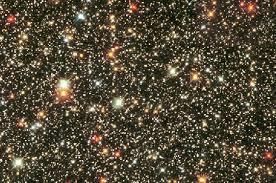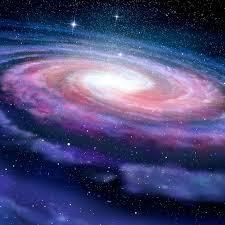Earth in space | Year 8 Physics (Cambridge) - Class 8 PDF Download
Introduction to Stars and Galaxies
Our universe is a vast and fascinating place filled with countless stars and galaxies. Understanding these celestial bodies helps us appreciate the beauty and complexity of the cosmos. This chapter will explore what stars and galaxies are, how they are formed, and their importance in the universe.
Stars
What are Stars?
Stars are massive, luminous spheres of plasma held together by gravity. They emit light and heat due to the nuclear fusion reactions occurring in their cores, where hydrogen is converted into helium.
Formation of Stars
Stars form in giant molecular clouds, also known as stellar nurseries. These clouds are primarily composed of hydrogen gas.
The process of star formation involves:
- Gravitational Collapse: Regions within the cloud become dense and collapse under their own gravity.
- Protostar Stage: As the cloud collapses, it heats up and forms a protostar.
- Nuclear Fusion: Once the core temperature becomes high enough, nuclear fusion begins, and a new star is born.
Types of Stars
Stars come in various types based on their size, temperature, and brightness:
- Red Dwarfs: Small, cool stars with long lifespans.
- Yellow Dwarfs: Medium-sized stars like our Sun.
- Blue Giants: Large, hot stars with short lifespans.
- Supergiants: Extremely massive stars that end their lives in spectacular supernova explosions.
Life Cycle of Stars
Stars undergo a lifecycle that includes:
- Main Sequence: The longest stage, where stars spend most of their lives fusing hydrogen into helium.
- Red Giant/Supergiant: As hydrogen runs out, stars expand and cool, becoming red giants or supergiants.
- End Stages: Depending on their mass, stars may become white dwarfs, neutron stars, or black holes.
Example of a Star: Our Sun
The Sun is a yellow dwarf star at the center of our solar system. It provides the energy necessary for life on Earth through its light and heat.
Galaxies
What are Galaxies?
Galaxies are massive systems composed of stars, stellar remnants, interstellar gas, dust, and dark matter, all bound together by gravity. They vary greatly in size and shape.
Types of Galaxies
Galaxies are classified into three main types:
- Spiral Galaxies: Have a flat, rotating disk with spiral arms. Example: The Milky Way.
- Elliptical Galaxies: Range from nearly spherical to elongated shapes, containing older stars. Example: M87.
- Irregular Galaxies: Lack a distinct shape, often chaotic in appearance. Example: The Large Magellanic Cloud.
Formation of Galaxies
- Galaxies formed in the early universe from regions of higher density that collapsed under gravity.
- Over billions of years, these regions coalesced to form galaxies.
The Milky Way Galaxy
- The Milky Way is a barred spiral galaxy that contains our solar system.
- It has a central bulge surrounded by a disk of stars, gas, and dust.
- The Milky Way is part of the Local Group, a collection of galaxies including the Andromeda Galaxy.

Galactic Structures
Galaxies are not isolated; they often exist in groups and clusters, forming large-scale structures in the universe:
- Galaxy Groups: Small collections of galaxies bound by gravity. Example: The Local Group.
- Galaxy Clusters: Larger assemblies of hundreds to thousands of galaxies. Example: The Virgo Cluster.
- Superclusters: Massive conglomerations of galaxy clusters. Example: The Laniakea Supercluster.
Examples and Observations
- Observing Stars and Galaxies Astronomers use telescopes to observe and study stars and galaxies. Different types of telescopes (optical, radio, and space-based) provide diverse views of the universe.
- Example: The Andromeda Galaxy: The Andromeda Galaxy (M31) is the closest spiral galaxy to the Milky Way and can be seen with the naked eye from Earth under dark skies. It provides valuable insights into the structure and evolution of galaxies.
- Example: The Orion Nebula: The Orion Nebula is a stellar nursery located in the Milky Way, where new stars are actively forming. It is visible with binoculars and small telescopes, offering a glimpse into star formation processes.
Conclusion
Understanding stars and galaxies allows us to comprehend the vastness of the universe and our place within it. From the life cycle of stars to the diverse types of galaxies, the study of these celestial objects reveals the dynamic and interconnected nature of the cosmos. By observing and learning about stars and galaxies, we gain a deeper appreciation for the complexity and beauty of the universe.
|
8 videos|39 docs|11 tests
|













